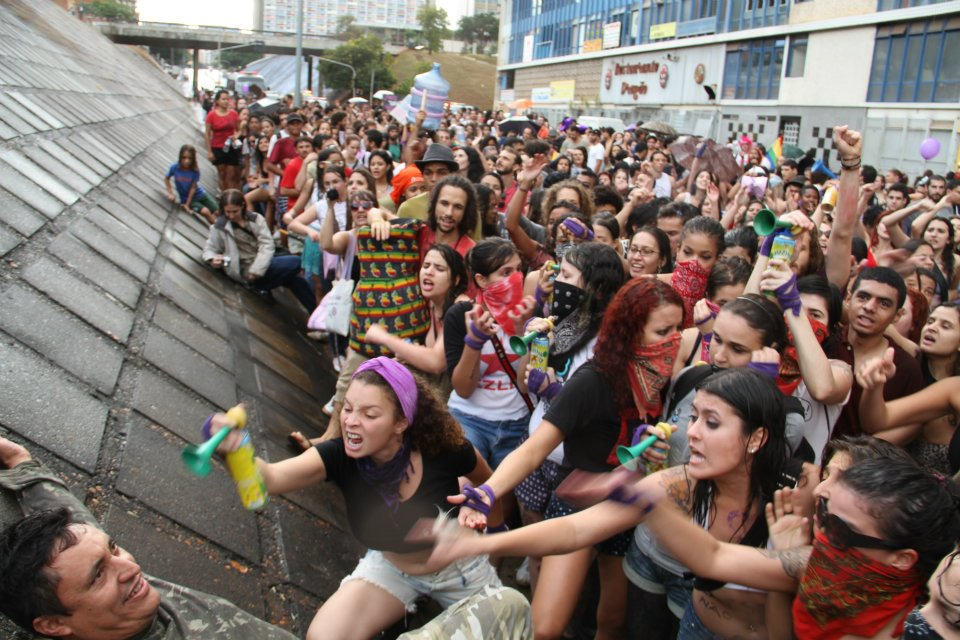Andrea Ayres-Deets, San Francisco, CA, USA, SSH Blog Correspondent
Street harassment forces us to question our safety. It compels us to reconsider our environment and surroundings. So many of us are far too familiar with the quickening of our pace, while we plan an escape route. Just in case. Your pulse races, and you grab your phone, or put a key in-between your knuckles. Just in case. Walking down the street should not have to be an act of heroics.
We often discuss street harassment at the personal level, and there is no doubt of the psychological trauma it causes. Talking about street harassment in this way is essential. The sharing of our communal experiences enables us to breakdown the culture of tolerance that has long permitted the continued existence of street harassment. We cannot forget to discuss the importance of the societal cost street harassment has.
It’s been well documented that street harassment alters the way we move about in public spaces, but what about the limitations it puts on our ability to engage in political speech? In Tahir, Egypt, we saw how extreme violence against women was used to limit their political participation in the uprising against then President Hosni Mubarak. The freedom to express ourselves through political speech is perhaps not always at the forefront of our minds, but when we are denied this right––we are being denied a right that harasses have and use freely. We need to unpack what this means for our representation and involvement in a Democratic society.
In order to demonstrate how street harassment is used to limit political participation, let’s take a look at a few examples. It’s important to note that the intention of the harasser does not matter, an individual does not have to intend to limit an individuals political participation in order to do so.
For example, if we look at the assaults that occurred during the Occupy Wall Street movement, we see women who are engaged in a political demonstration who were then assaulted. The overall effect of these assaults meant that women and others who are common targets of harassment, had to change their behavior in order to continue their participation. Those in public spaces should not have to disrupt or alter the manners in which we engage in political speech for fear of reprisal, harassment, or abuse.

What we see in the photo on the right is a man who exposed himself during a Slut Walk march. Regardless of what this man’s intentions were, he was engaging in a violent act while people were participating in political speech. He sought to devalue their message, their numbers, to make a mockery of their protest. It is a prime example of how street harassment is used to tell individuals that their very presence, is not wanted––is not protected. There are still other images of women who are participating in political speech, whose images and protests are altered in an effort to silence them.
For many, even the thought of participating in a demonstration represents a risk they are just unwilling to take for fear of being harassed. In this way, we do not currently possess the proper framework for understanding how many are affected. Though research does indicate that prior victims of street harassment are more likely to avoid certain areas or streets “all or more of the time.”
That is perhaps what is so troubling about street harassment: too often its effects silence us. The effects of silencing can manifest themselves both physically and mentally. Either we alter our physical being, or we avoid areas, or we stop engaging in political activity. If we do not feel welcome and safe in public spaces each day, then how we will feel welcome and safe when engaged in a political activity?
What we are really discussing here is the denial of our ability to live our lives to the fullest, to exercise our lives without policing our actions and selves out of fear. This is one of the many important reasons why street harassment must stop.
Andrea Ayres-Deets worked as a politics intern at PolicyMic and field organizer. She currently consults with startups in the SF area on content and how to better engage users. You can follow her on twitter: @missafayres or check out her website ayres-deets.com.
